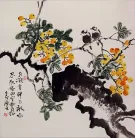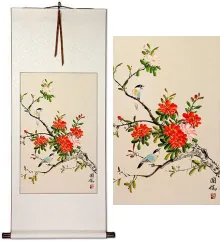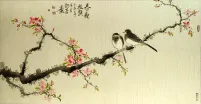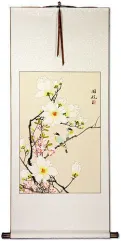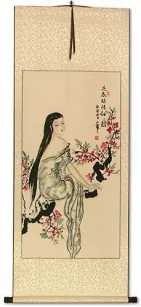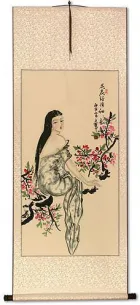Many custom options...
And formats...

Branch in Chinese / Japanese...
Sorry! There's currently no match for Branch in the calligraphy database...
If you want a special phrase, word, title, or proverb, feel free to contact me, and I'll translate your custom calligraphy idea for you.
These search terms might be related to Branch:
Every Creature Has a Domain
First Turn of the Dharma Wheel
In the Abyss of Infinite Bitterness - Turn to the Shore
Listen to Both Sides and Be Enlightened, Listen to One Side and Be in the Dark
Tai Chi Wing Chun Kung Fu
Wing Chun
Wing Chun Fist
Wing Chun Fist Maxims
Wing Chun Fist Maxims (Part 1)
Wing Chun Fist Maxims (Part 2)
Wing Chun Kung Fu
Below are some entries from our dictionary that may match your branch search...
| Characters If shown, 2nd row is Simp. Chinese |
Pronunciation Romanization |
Simple Dictionary Definition |
丑 see styles |
chǒu chou3 ch`ou chou ushi うし |
More info & calligraphy: Chou(1) the Ox (second sign of the Chinese zodiac); (2) (obsolete) (See 丑の刻) hour of the Ox (around 2am, 1-3am, or 2-4am); (3) (obsolete) north-northeast; (4) (obsolete) twelfth month of the lunar calendar; (personal name) Chuu |
派 see styles |
pài pai4 p`ai pai minamata みなまた |
(literary) tributary; branch of a river; clique; school; group; faction; (bound form) style; manner; to send (a person or resource); to dispatch; to allocate (a resource or task); to appoint (sb); classifier for factions, groups etc; (preceded by 一[yi1]) classifier used in characterizing a scene, atmosphere, demeanor, sound, remark etc; (loanword) pi (Greek letter Π, π); the circular ratio 𝜋 = 3.14159...; (loanword) pie (n,n-suf) (1) group; faction; clique; coterie; (n,n-suf) (2) (political) faction; wing; camp; (n,n-suf) (3) school (of thought, painting, etc.); (n,n-suf) (4) sect; denomination; (surname) Minamata branch |
科 see styles |
kē ke1 k`o ko shina; shina しな; シナ |
More info & calligraphy: Coe(kana only) (See 科の木・しなのき) Japanese linden (Tilia japonica); (personal name) Ke A class, lesson, examination. |
門 门 see styles |
mén men2 men yuki ゆき |
More info & calligraphy: Gate(n,n-suf) (1) gate; (n,n-suf) (2) (もん only) branch of learning based on the teachings of a single master; (n,n-suf) (3) (もん only) {biol} division; phylum; (counter) (4) (もん only) counter for cannons; (surname) Yuki A door; gate; a sect, school, teaching, especially one leading to salvation or nirvana. |
ログ see styles |
rogu ログ |
More info & calligraphy: Rog |
菩提樹 菩提树 see styles |
pú tí shù pu2 ti2 shu4 p`u t`i shu pu ti shu bodaiju ぼだいじゅ |
More info & calligraphy: The Tree of Enlightenment / The Bodhi Tree(1) Tilia miqueliana (species of linden tree); (2) (See インドボダイジュ) sacred fig (Ficus religiosa); bodhi tree; bo tree; peepal tree; pipal tree; (given name) Bodaiju bodhidruma, bodhitaru, bodhivṛkṣa; the wisdom-tree, i.e. that under which Śākyamuni attained his enlightenment, and became Buddha. The Ficus religiosa is the pippala, or aśvattha, wrongly identified by Faxian as the palm-tree; it is described as an evergreen, to have been 400 feet high, been cut down several times, but in the Tang dynasty still to be 40 or 50 feet high. A branch of it is said to have been sent by Aśoka to Ceylon, from which sprang the celebrated Bo-tree still flourishing there. |
釋迦牟尼 释迦牟尼 see styles |
shì jiā móu ní shi4 jia1 mou2 ni2 shih chia mou ni Shakamuni |
More info & calligraphy: Shakyamuni / The Buddha釋迦文 (釋迦文尼); 釋伽文 Śākyamuni, the saint of the Śākya tribe. muni is saint, holy man, sage, ascetic monk; it is: intp. as 仁 benevolent, charitable, kind, also as 寂默 one who dwells in seclusion. After '500 or 550' previous incarnations, Śākyamuni finally attained to the state of Bodhisattva, was born in the Tuṣita heaven, and descended as a white elephant, through her right side, into the womb of the immaculate Māyā, the purest woman on earth; this was on the 8th day of the 4th month; next year on the 8th day of the 2nd month he was born from her right side painlessly as she stood under a tree in the Lumbinī garden. For the subsequent miraculous events v. Eitel. also the 神通遊戲經 (Lalitavistara), the 釋迦如來成道記, etc. Simpler statements say that he was born the son of Śuddhodana, of the kṣatriya caste, ruler of Kapilavastu, and Māyā his wife; that Māyā died seven days later, leaving him to be brought up by her sister Prājapati; that in due course he was married to Yaśodharā who bore him a son, Rāhula; that in search of truth he left home, became an ascetic, severely disciplined himself, and finally at 35 years of age, under a tree, realized that the way of release from the chain of rebirth and death lay not in asceticism but in moral purity; this he explained first in his four dogmas, v. 四諦 and eightfold noble way 八正道, later amplified and developed in many sermons. He founded his community on the basis of poverty, chastity, and insight or meditation, ad it became known as Buddhism, as he became known as Buddha, the enlightened. His death was probably in or near 487 B.C., a few years before that of Confucius in 479. The sacerdotal name of his family is Gautama, said to be the original name of the whole clan, Śākya being that of his branch, v. 瞿, 喬.; his personal name was Siddhārtha, or Sarvārthasiddha, v. 悉. |
丫 see styles |
yā ya1 ya |
fork; branch; bifurcation; girl |
亥 see styles |
hài hai4 hai i い |
12th earthly branch: 9-11 p.m., 10th solar month (7th November-6th December), year of the Boar; ancient Chinese compass point: 330° (1) the Boar (twelfth sign of the Chinese zodiac); the Pig; (2) (obsolete) (See 亥の刻) hour of the Boar (around 10pm, 9-11pm, or 10pm to 12 midnight); (3) (obsolete) north-northwest; (4) (obsolete) tenth month of the lunar calendar; (personal name) Gai |
分 see styles |
fèn fen4 fen wake わけ |
part; share; ingredient; component (n,n-suf) (1) part; portion; share; (suffix noun) (2) amount; worth (as in "two days' worth"); enough (for); (3) one's means; one's place; one's lot; one's social position; (4) one's duty; one's part; (5) condition; state (of affairs); extent; rate (as in "at this rate"); (n,adv) (6) in proportion to; just as much as; to the same degree; (suffix noun) (7) content (e.g. alcohol); percentage; (suffix noun) (8) (See 兄貴分・2) equivalent to (e.g. an old brother); (surname) Wake To divide. separate; a fractional part: a share: a duty. |
午 see styles |
wǔ wu3 wu uma うま |
7th earthly branch: 11 a.m.-1 p.m., noon, 5th solar month (6th June-6th July), year of the Horse; ancient Chinese compass point: 180° (south) (1) the Horse (seventh sign of the Chinese zodiac); (2) (obsolete) (See 午の刻) hour of the Horse (around noon, 11am-1pm, or 12 noon-2pm); (3) (obsolete) south; (4) (obsolete) fifth month of the lunar calendar; (personal name) Kogoe Noon. |
卯 see styles |
mǎo mao3 mao u(p); bou / u(p); bo う(P); ぼう |
mortise (slot cut into wood to receive a tenon); 4th earthly branch: 5–7 a.m., 2nd solar month (6th March–4th April), Year of the Rabbit; ancient Chinese compass point: 90° (east); (coll.) to concentrate one's strength (variant of 鉚|铆[mao3]) (1) the Rabbit (fourth sign of the Chinese zodiac); the Hare; (2) (See 卯の刻) hour of the Rabbit (around 6am, 5-7am, or 6-8am); (3) (obsolete) east; (4) (obsolete) second month in the lunar calendar; (personal name) Bou |
唵 see styles |
ǎn an3 an on おん |
(interjection) oh!; (dialect) to stuff something in one's mouth; (used in buddhist transliterations) om (interjection) (See オーム) om (ritual chant in Hinduism, etc.); aum oṃ; auṃ; 'a word of solemn affirmation and respectful assent (sometimes translated by yes, verily, so be it, and in this sense compared with Amen). 'M. W. It is 'the mystic name for the Hindu triad', and has other significations. It was adopted by Buddhists, especially by the Tantric school, as a mystic spell, and as an object of meditation. It forms the first syllable of certain mystical combinations, e. g. 唵?呢叭 061971 吽 oṃ maṇi padme huṃ, which is a formula of the Lamaistic branch, said to be a prayer to Padmapani; each of the six syllables having its own mystic power of salvation from the lower paths of transmigration, etc.; the formula is used in sorcery, auguries, etc.; other forms of it are 唵?呢鉢頭迷吽; 唵麽抳鉢訥銘吽. |
寅 see styles |
yín yin2 yin fusa ふさ |
3rd earthly branch: 3-5 a.m., 1st solar month (4th February-5th March), year of the Tiger; ancient Chinese compass point: 60° (1) the Tiger (third sign of the Chinese zodiac); (2) (obsolete) (See 寅の刻) hour of the Tiger (around 4am, 3-5am, or 4-6am); (3) (obsolete) east-northeast; (4) (obsolete) first month of the lunar calendar; (surname) Fusa |
岔 see styles |
chà cha4 ch`a cha |
fork in road; bifurcation; branch in road, river, mountain range etc; to branch off; to turn off; to diverge; to stray (from the path); to change the subject; to interrupt; to stagger (times) |
巳 see styles |
sì si4 ssu mi み |
6th earthly branch: 9-11 a.m., 4th solar month (5th May-5th June), year of the Snake; ancient Chinese compass point: 150° (1) the Snake (sixth sign of the Chinese zodiac); the Serpent; (2) (obsolete) (See 巳の刻) hour of the Snake (around 10am, 9-11am, or 10am-12 noon); (3) (obsolete) south-southeast; (4) (obsolete) fourth month of the lunar calendar; (female given name) Mi snake |
戌 see styles |
xū xu1 hsü mamoru まもる |
11th earthly branch: 7-9 p.m., 9th solar month (8th October-6th November), year of the Dog; ancient Chinese compass point: 300° (1) the Dog (eleventh sign of the Chinese zodiac); (2) (obsolete) (See 戌の刻) hour of the Dog (around 8pm, 7-9pm, or 8-10pm); (3) (obsolete) west-northwest; (4) (obsolete) ninth month of the lunar calendar; (given name) Mamoru The hour from 7-9 p. m.; translit. śū, śu. |
房 see styles |
fáng fang2 fang bou / bo ぼう |
house; room; CL:間|间[jian1]; branch of an extended family; classifier for family members (or concubines) (1) chamber; room; cell (prison); atrium; (2) (See 坊・2) home of a monk; monk; (3) {astron} (See 二十八宿,蒼竜・そうりょう・3) Chinese "room" constellation (one of the 28 mansions); (surname) Bou House, room. The rooms for monks and nuns in a monastery or nunnery. |
撓 挠 see styles |
náo nao2 nao tawawa たわわ |
to scratch; to thwart; to yield (adjectival noun) (kana only) (of a branch heavily laden with fruit, etc.) drooping; bending |
擗 see styles |
pǐ pi3 p`i pi |
(literary) to beat the breast; to break off; to snap off (a branch, an ear of corn etc) |
支 see styles |
zhī zhi1 chih shi し |
to support; to sustain; to erect; to raise; branch; division; to draw money; classifier for rods such as pens and guns, for army divisions and for songs or compositions (abbreviation) (obsolete) (See 支那) China; (surname) Shi A branch; to branch, put off, pay, advance. |
未 see styles |
wèi wei4 wei mirei / mire みれい |
not yet; did not; have not; not; 8th earthly branch: 1-3 p.m., 6th solar month (7th July-6th August), year of the Sheep; ancient Chinese compass point: 210° (prefix) not yet; un-; (female given name) Mirei Not yet; the future; 1-3 p. m. |
末 see styles |
mò mo4 mo matsu まつ |
tip; end; final stage; latter part; inessential detail; powder; dust; opera role of old man (n-suf,n) (1) the end (of); (suffix noun) (2) (See 粉末) powder; (surname, given name) Matsu Branch, twig; end; dust; not; translit, ma, va, ba; cf. 摩. |
朶 朵 see styles |
duǒ duo3 to eda えだ |
variant of 朵[duo3] (counter) (rare) branch (of flowers); cluster; mass (of clouds); (surname) Eda |
杪 see styles |
miǎo miao3 miao kozue こずえ |
the limit; tip of branch (1) (archaism) switch (long, tender shoot of a plant); (2) switch (cane used for flogging); treetop; tip of a branch; (female given name) Kozue |
枝 see styles |
zhī zhi1 chih shige しげ |
branch; classifier for sticks, rods, pencils etc (counter) counter for long, thin things (i.e. swords); (surname) Shige A branch. |
柯 see styles |
kē ke1 k`o ko ko こ |
(literary) branch; stem; stalk; (literary) ax handle (obscure) handle of an axe; handle of a hatchet; (surname) Ko Axe-handle; agent; translit. k, v. 呵, 迦, 哥, etc. |
梗 see styles |
gěng geng3 keng kyō |
branch; stem; stalk; CL:根[gen1]; to block; to hinder; (neologism that evolved from 哏[gen2], initially in Taiwan, during the first decade of the 21st century) memorable creative idea (joke, catchphrase, meme, neologism, witty remark etc); prominent feature of a creative work (punchline of a joke, trope in a drama, special ingredient in a dish, riff in a pop song etc) illness |
梢 see styles |
shāo shao1 shao masato まさと |
tip of branch treetop; tip of a branch; (personal name) Masato branch |
椄 see styles |
jiē jie1 chieh |
(archaic) to graft (a branch, bud etc) |
Click here for more branch results from our dictionary
This in-stock artwork might be what you are looking for, and ships right away...
Gallery Price: $108.00
Your Price: $59.88
Gallery Price: $268.00
Your Price: $148.88
Gallery Price: $322.00
Your Price: $178.88
Gallery Price: $126.00
Your Price: $69.88
Gallery Price: $126.00
Your Price: $69.88
Gallery Price: $200.00
Your Price: $88.88
Gallery Price: $200.00
Your Price: $88.88
Successful Chinese Character and Japanese Kanji calligraphy searches within the last few hours...





